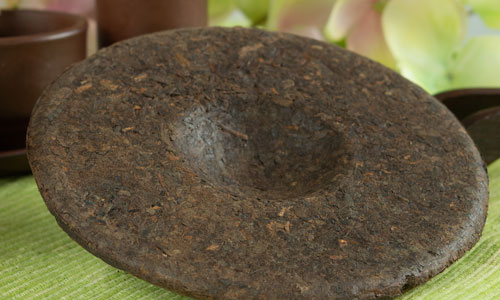In the humid and impenetrable tropical forests located in the foothills of Tibet, the oldest tea trees grow - the historical homeland of Pu'er.
In the process of evolution, the offspring of maternal plants spread throughout the world, but it is Yunnan Puer tea that is the best, and today the cost of finished raw materials in the market and auctions is largely determined by the exact place of its origin.
In the territory of Yunnan province (in translation & laquo; Cloud South & raquo;), trees were found that are over 1,500 years old, and the oldest was found in Zhen Yuan - it is about 2,000 years old. But Gu Shu (puer from old trees) is allowed to call tea harvested from plants over 100 years old.
Puer can be purchased from our online store :
We sell tea directly from the manufacturer.
View the full range of PUers here
By the way, Yunnan became part of the PRC only in 1950, and it was from that moment that significant legislative changes were made to the production and sale of tea.
The Yunnan climate is fundamentally different from other regions of China: here the dry season gives way to the rainy season, and due to the lack of temperature jumps, it seems as if the air is always warm and gentle spring.
The culture and life of local residents are also different from the life of the Chinese of the central regions: most do not even know Chinese, communicating in their dialect & ndash; the isolation of the area, the lack of tourist routes and the veneration of traditions allowed the Yunnans to preserve the originality of the customs for collecting tea leaves.

History of the name & laquo; Puer & raquo;
In one of the most famous Puerto regions of SiShuangBanN, an equestrian tea route began, which passed through the city of Pu, which was a serious logistics center at that time.
Small farmers brought mao-cha (raw tea) here, where it was bought by large tea companies for subsequent processing and packaging, as well as sales to overseas merchants.
Yunnan tea was famous in the era of the Tan dynasty known as Yin shen cha, and then gradually transformed under the name of the city: first in Pu cha, and then in Pu er.
& laquo; Puerto & raquo; the wave appeared around the 70s of the twentieth century, and marketing specialists instantly turned pu'er tea into premium-level products, delivered in distinctive packages with marking tags, where the region of growth, collection and packaging dates are noted.
In 2008, the PRC government introduced the GB/T22111-2008 standard with an indication of the technology of cultivation, processing of raw materials and a description of the general taste characteristics.
Puer from cultivated shrubs is classified into six varieties, and tea from old trees is assessed by their geographical location, i.e. the status of the region.
There are 5 tea areas in Yunnan:
- Dian-si;
- Dian-nan;
- Zhong-Dian;
- Dian-Dongbei;
- Dian-Sibei.

Expert Opinion
Yunnan, as the historical homeland of the Puers, was established by the method of biochemical analysis carried out in the middle of the twentieth century.
It is in the jungle of this province, along with adjacent plantings in Vietnam and Upper Burma, that tea trees are carriers of the maternal gene.
At home, trees have almost continuous vegetation, allowing you to harvest about 8 crops in 12 months, but as plants are removed to the north, the tea leaf becomes smaller, thinner and more delicate and the quality crop is harvested no more than 2-3 times a year.
We partner directly with the best tea producers to supply plantation high-grade Shen Pu'er and Shu Pu'er.
Having tasted teas from the & laquo; Russian Tea Company & raquo; once, you can no longer resist the urge to buy them again and again, making sure that the products are original.
